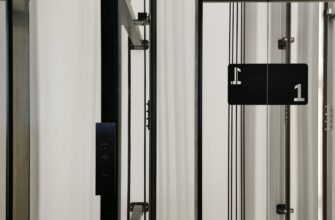- Why Cold Storage is Non-Negotiable for Crypto Security
- Step 1: Understand Cold Storage Fundamentals
- Step 2: Choose Your Cold Storage Solution
- Step 3: Set Up Your Cold Storage Device
- Step 4: Transfer Funds Securely
- Step 5: Physically Secure Your Device & Backups
- Step 6: Create Redundant Backups
- Step 7: Test Recovery Annually
- Step 8: Ongoing Maintenance Protocol
- Cold Storage Backup FAQ
- Q: How much crypto should I keep in cold storage?
- Q: Can I use multiple hardware wallets?
- Q: What if my hardware wallet breaks?
- Q: Is it safe to buy used hardware wallets?
- Q: How do I leave crypto to heirs?
Why Cold Storage is Non-Negotiable for Crypto Security
In the volatile world of cryptocurrency, securing your backup funds isn’t just smart—it’s essential. Cold storage, where private keys remain permanently offline, provides fortress-like protection against hackers, malware, and exchange failures. Unlike “hot wallets” connected to the internet, cold storage solutions like hardware wallets or paper wallets isolate your assets from digital threats. This step-by-step guide demystifies how to securely move backup funds into cold storage, ensuring your financial safety net remains intact even during worst-case scenarios.
Step 1: Understand Cold Storage Fundamentals
Before diving in, grasp these core concepts:
- Private Keys: Cryptographic codes controlling access to your crypto. Never share them.
- Seed Phrases: 12-24 word recovery phrases that regenerate keys. Treat like gold.
- Offline vs. Online: Cold storage means keys NEVER touch internet-connected devices.
Step 2: Choose Your Cold Storage Solution
Evaluate these popular options:
- Hardware Wallets (Recommended): Devices like Ledger or Trezor. Pros: User-friendly, transaction verification. Cons: Cost ($50-$200).
- Paper Wallets: Physical printouts of keys/QR codes. Pros: Free, ultra-secure if done right. Cons: Easily damaged, no transaction capability.
- Metal Backup Plates: Engraved seed phrases on titanium. Pros: Fire/waterproof. Cons: Setup complexity.
Step 3: Set Up Your Cold Storage Device
For hardware wallets:
- Unbox in a private, clean space away from cameras.
- Connect to a malware-free computer via USB.
- Follow on-screen prompts to initialize the device.
- Write down your generated seed phrase by hand—never digitally.
Step 4: Transfer Funds Securely
- Log into your exchange or hot wallet.
- Generate a receive address from your cold storage device.
- Send a small test transaction first (e.g., $10 worth).
- Verify receipt on your cold storage interface.
- Transfer the remaining funds after confirmation.
Step 5: Physically Secure Your Device & Backups
- Store hardware wallets in fireproof safes or safety deposit boxes.
- Place paper/metal backups in multiple geographically separate locations (e.g., home safe + bank vault).
- Never store digital photos or cloud copies of seed phrases.
Step 6: Create Redundant Backups
Mitigate risk with the 3-2-1 rule:
- 3 copies of your seed phrase (e.g., paper + 2 metal plates)
- 2 different formats (e.g., paper + encrypted USB)
- 1 off-site backup (e.g., trusted relative’s safe)
Step 7: Test Recovery Annually
Simulate disaster recovery every 12 months:
- Wipe your hardware wallet.
- Restore it using your seed phrase backup.
- Verify fund accessibility.
- Update storage locations if compromised.
Step 8: Ongoing Maintenance Protocol
- Firmware Updates: Install manufacturer updates (verify via official sites only).
- Asset Checks: Review holdings quarterly via blockchain explorers.
- Location Audits: Confirm backup integrity during tests.
Cold Storage Backup FAQ
Q: How much crypto should I keep in cold storage?
A: Minimum 80% of long-term holdings. Keep only spending money in hot wallets.
Q: Can I use multiple hardware wallets?
A: Absolutely. Diversify across brands/models to avoid single-point failures.
Q: What if my hardware wallet breaks?
A> Your seed phrase is the real backup. Replace the device and restore via recovery phrase.
Q: Is it safe to buy used hardware wallets?
A> Never risk it. Purchase new devices directly from manufacturers to avoid tampering.
Q: How do I leave crypto to heirs?
A> Store seed phrases in legal documents like encrypted USB in a safety deposit box with inheritance instructions.
Final Tip: Treat cold storage like a nuclear launch code—meticulous preparation prevents catastrophic loss. By following these steps, your backup funds become virtually unhackable, giving you peace of mind in the unpredictable crypto landscape.








